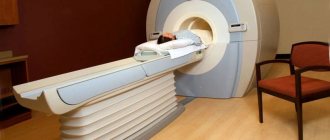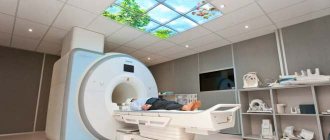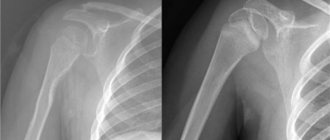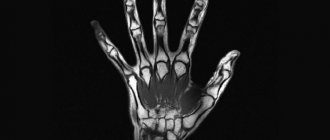What is its essence
VEM is a recording of an ECG (electrocardiogram) during minutes of physical activity. The study is carried out on a bicycle ergometer - a special bicycle that automatically doses the load. During the procedure, the patient pedals at different intensities (the load increases in steps), while the pulse and blood pressure are recorded. The choice of load is determined by the general condition of the patient, underlying disease and medical history.
Similar testing is carried out on an incline treadmill (treadmill) or using a step test, in which the patient steps on two steps in turn.
Bicycle ergometry allows you to:
- identify heart failure, coronary heart disease, latent arterial hypertension, exercise-related heart rhythm disturbances;
- determine tolerance to increasing physical activity and the reaction of the cardiovascular system to it;
- find out whether there is a connection between pain and impaired blood flow, that is, whether the pain has coronary causes;
- assess the dynamics of the disease and the effectiveness of treatment;
- track the recovery time of blood pressure and heart activity after stopping the load;
- assess the patient’s performance after suffering from ischemic heart disease.
The fact is that in patients with cardiac ischemia, characteristic changes in the electrocardiogram appear only during physical activity, when blood pressure rises, the pulse quickens, and the heart works faster to meet the heart’s increased need for oxygen. In healthy people, during exercise, vasodilation occurs, blood flow and oxygen supply to the myocardium increase. People with heart disease do not have enough oxygen, they experience chest pain, and specific changes are recorded on the electrocardiogram.
Bicycle ergometry allows you to diagnose ischemic heart disease, which cannot be determined using electrocardiography at rest
Possible complications
With proper preparation and correct execution of the bicycle ergometry , no serious complications or adverse reactions are observed. The following effects may occasionally be observed:
- Acute coronary syndrome is a severe lack of nutrition of the heart muscle.
- Heart rhythm disturbances.
- Hypertensive crisis.
- A sharp drop in blood pressure.
- Bronchospasm, acute respiratory failure.
- Fainting.
The patient should know that he has the right to refuse to perform a bicycle ergometer test. However, it is important to understand that the test results can be very useful in determining the prognosis of the disease and prescribing appropriate treatment.
Preparing for the test
- Physical and emotional stress is not allowed before performing VEM.
- You cannot eat for three hours before the procedure; a light breakfast is allowed in the morning (for example, kefir and a piece of bread).
- The medication is stopped within 24 hours.
- The day before (12 hours before the examination) you should not drink alcoholic beverages, coffee or smoke.
- It is necessary to find out whether there are any contraindications to an ECG with stress.
Important! The patient must notify the doctor in advance if he is taking medications. Some medications cannot be stopped abruptly, so your doctor should do this in advance. These include cardiac glycosides, diuretics, calcium antagonists, beta blockers, corticosteroids and others. Blood thinners and hypoglycemic agents are not canceled.
Relevance of diagnostics and cost of bicycle ergometry
One of the reasons for performing bicycle ergometry in completely healthy people is the desire to find out hidden heart pathologies and malfunctions in the cardiovascular system. The cost of 1000 hryvnia is not high for visiting a diagnostician’s office once a year.
News occasionally appears in the press or in circles of acquaintances when a person loses consciousness during physical exertion, or even in fatal cases when a sudden cardiac arrest occurs for no apparent reason.
It is worth thinking about conducting bicycle ergonometry for schoolchildren:
Remember: diagnostics prolongs life by identifying weaknesses in a timely manner.
Make an appointment by calling:
Conditions
Bicycle ergometry cannot be performed earlier than two hours after breakfast.
The test is carried out under the supervision of an experienced cardiologist who knows the patient’s medical history and the indications for the procedure. The room must be equipped with all the necessary equipment in case of resuscitation. The air temperature in it is from 18 to 20°C.
Constant monitoring of the well-being and appearance of the subject is carried out. Changes in the electrocardiogram are monitored using an oscilloscope. Heart rate and blood pressure are regularly recorded.
The pedaling frequency should be approximately 60 revolutions per minute (from 40 to 80).
The load is assessed by blood pressure, heart rate, ECG, and oxygen consumption. Tests with maximum load can only be performed on healthy people.
Decoding and interpretation of results
All results are reflected in the study protocol. Key indicators that interest specialists:
- Initial heart rate. How many beats per minute there were at the beginning.
- Final heart rate. Quantity at the end of the procedure.
- ECG indicators. All segments and teeth are taken into account.
- Duration of the examination.
- The maximum load at which the peak occurred.
- Reason for stopping bicycle ergometry.
Deciphering and interpretation are carried out both by specialists on site and by a cardiologist, who will examine the results himself. You won’t be able to evaluate the indicators on your own. Because there are too many of them, and there are even more nuances during interpretation.
Methodology
The sequence of actions when conducting a test is as follows:
We recommend reading the article: ECG signs of angina pectoris
- Before testing, blood pressure and resting ECG readings are taken.
- Electrodes are attached to the patient's chest to take an electrocardiogram, and a tonometer cuff is placed on the shoulder to record blood pressure readings.
- He begins to pedal the bicycle ergometer with minimal intensity. The load will increase in steps every two to three minutes.
- During the procedure, changes in the heart cardiogram and blood pressure readings are recorded.
- The patient should tell the doctor about any discomfort that occurs during exercise, even if it is minor.
- When a certain level of heart rate and blood pressure is reached, when pain appears, changes in the ECG or increased discomfort, the patient stops pedaling, but the result continues to be recorded for another ten minutes so that the doctor can assess how the recovery is progressing.
Methodology for monitoring blood pressure and taking an ECG
ECG recording is carried out in twelve modified leads. On the arms, the electrodes are attached closer to the shoulders or in the area of the collarbones, and the electrodes usually intended for the legs are attached in the lumbar region or in the area of the iliac bones, and sometimes in the area of the shoulder blades on the back (this is more convenient for attaching reusable electrodes).
Before the test begins, a regular ECG is recorded with the subject lying on his back. The location of the electrodes is indicated in the report. Computer processing of ECG allows for dynamic express analysis of ST area, degree of ST segment depression, ST slope, ST index/heart rate, etc. When automatically measuring blood pressure, errors in diastolic blood pressure measurements may occur due to movement, so it is recommended to duplicate them with manual blood pressure measurements.
If a pathological blood pressure reaction is registered, it should be rechecked by a second testing employee.
Indications for stopping the load
- The pressure decreased by 25% of the original. This is a sign of the onset of ischemic collapse.
- The pressure increased to 230/130 mm Hg. pillar or more.
- There was a sharp weakness.
- An angina attack began.
- The person is experiencing suffocation.
- Signs such as dizziness, nausea, headache, and blurred vision appeared.
- On the ECG, the ST segment decreased by a millimeter or more.
- The ST segment has risen by more than a millimeter.
- The heart rhythm is disturbed (atrial fibrillation, ventricular extrasystole, paroxysmal tachycardia).
- The patient refused the procedure (fear, weakness, discomfort, pain in the calves).
A bicycle ergometer is an exercise bike that is capable of dispensing load with high accuracy.
Who is prescribed bicycle ergometry?
VEM can be used to diagnose stable angina.
Who is a VEM examination indicated for? What can it give in relation to the diagnosis of heart disease? Indications for performing a stress test are the following cases:
- if the cardiogram showed signs of coronary heart disease, but there are no complaints from the patient;
- to assess the degree of resistance of the body to physical activity when diagnosed with coronary artery disease;
- when the patient complains of symptoms of coronary artery disease, but cardiography does not reveal changes;
- with high blood pressure;
- if the patient complains of heart rhythm disturbances, but ECG data does not confirm this;
- for diabetes mellitus;
- smoking;
- in case of fat metabolism disorders, for example, high cholesterol, obesity;
- if relatives have had cases of heart disease, as well as death caused by heart pathology, before the age of 60.
A specialist may prescribe bicycle ergometry if the patient complains of frequent shortness of breath, periodic discomfort in the chest area or pain radiating to the scapula (shoulder, jaw). Other symptoms that may be indications for VEMPA are: dizziness and nausea, changes in heart rate, and headache.
It is recommended for men over 40 years of age and women over 50 years of age to undergo a bicycle ergometer examination. In childhood and adolescence, the test is indicated to determine acceptable physical activity after heart surgery and other organ diseases.
Decoding the result
After the test, the doctor will give the patient a conclusion, which will contain the following data:
- Work that was done (in Joules).
- Reasons for stopping testing (maximum load was reached, symptoms appeared or changes on the ECG).
- Changes in blood pressure and pulse, their product.
- Level of performance (can be high, medium, low).
- Determination of the type of blood pressure response to exercise (if blood pressure is 200/100, the hypertensive type requires treatment).
- Recovery time for heart rate and blood pressure (normal – 5 minutes).
- Are there any rhythm disturbances? Normally, they should not be present, normal is sinus rhythm, sinus tachycardia is acceptable.
- There should be no coronary changes on the ECG. If they are present, the minute at which they disappeared is recorded.
- The severity of cardiac ischemia is assessed (depending on the load under which changes in the ECG appeared).
To evaluate an exercise test, four forms of a doctor’s report are used:
- The test is negative - if, when submaximal heart rate is reached, coronary artery disease is not detected (either clinically or on an electrocardiogram), while the presence of cardiac ischemia is not excluded, but there is no pronounced damage to the cardiac arteries.
- Positive - if the pressure has decreased, complex arrhythmias, chest pain, suffocation, severe shortness of breath and ECG changes characteristic of coronary artery disease have occurred.
- Doubtful - if there is pain, but there are no changes on the ECG.
- Incomplete - if the patient stopped testing due to leg cramps, dizziness, headache, and there are no signs of ischemia.
After VEM, the doctor may recommend changing the treatment of hypertension and coronary artery disease, and refer you for other examinations (coronography, ultrasound of the vessels of the head, neck, legs).
The cardiogram obtained during the test is deciphered by a cardiologist, and the patient receives a conclusion with a positive, negative or questionable result.
Recovery period
The load must be reduced gradually to avoid a vagotonic reaction, in which blood pressure drops sharply, as well as bradycardia. Therefore, at the end of the test, you need to spin the pedals with the resistance turned off for about a minute. Observation after exercise lasts 6-8 minutes. If, after this time, heart rate, blood pressure and ECG have not yet returned to their original values, then observation is carried out until they normalize. If there is a pathological reaction to almost full load when observing the patient in a supine position, these deviations may return after 5 minutes, so it is better for the patient to spend the recovery period sitting.
Indications
Bicycle ergometry is carried out to diagnose diseases that occur in a latent form, to determine the causes of their development and to determine treatment tactics or rehabilitation measures. Main indications:
- No changes in the ECG at rest with heart pain and manifestations of angina pectoris.
- Sluggish heart failure.
- Deviations from normal values on the ECG in the absence of any symptoms.
- With angina pectoris, determining its severity.
- Detection of arrhythmias and conduction disturbances of the heart during its increased work.
- Impaired fat metabolism without symptoms of coronary artery disease.
- Control of therapy for cardiovascular diseases.
- Examination of people whose work involves risk (pilots, divers, drivers and others).
- Examination of persons whose age exceeds 40 years.
- Survey of conscripts.
- Examination of athletes to assess cardiac function.
Basic indicators of bicycle ergometry
Heart rate
It is known that intense physical activity causes the heart to work harder, which naturally leads to an increase in heart rate, increased cardiac output and oxygen (O2) consumption. Maximum O2 uptake (maximum aerobic capacity, normally 100%) tends to decrease with age. The same picture is observed in untrained people and in the presence of cardiovascular pathology (and the reason for this is a decrease in cardiac output). In order to determine how different the real values are from the normal values, you need to know the norm for physical activity depending on gender, age, height and weight (the doctor interpreting the test results has formulas and tables).
An example would be to calculate your maximum heart rate at 100% aerobic capacity:
Heart ratemax = 220 – number of years lived
Thus, approximately for 20-year-olds, heart ratemax = 200 beats/min, for 40-year-olds – 180 beats/min, while for people over 60 years of age, this figure will normally drop to 160 beats/min.
In addition to the maximum heart rate, when performing bicycle ergometry, the concept of submaximal heart rate can be used, corresponding to a predetermined physical load, the power of which does not reach 100% (this can be 60, 70, or 80%). For such cases, there are also formulas and tables that the doctor uses to calculate. When calculating the submaximal heart rate, age is subtracted from 200 (heart rate = 200 - number of years lived).
What variations can you expect with bicycle ergometry? There are three of them: normal, decrease in heart rate compared to normal values, and increase.
The heart of some people does not respond particularly to physical activity (heart rate does not increase), which suggests:
- Sick sinus syndrome (SSNS);
- Insufficient production of thyroid hormones (hypothyroidism);
- Exposure to certain medications, such as beta blockers.
A rapid increase in heart rate above normal levels may indicate:
- Detraining of the patient;
- High emotional background during the test period;
- Inability of the left ventricle to fully relax to fill with blood (dysfunction);
- Anemic condition;
- Increased functional activity of the thyroid gland (hyperthyroidism).
Arterial pressure
An increase in physical activity naturally leads to an increase in systolic pressure, which can reach a level of 200 mm or more. rt. Art., while diastolic blood pressure normally (in healthy individuals) changes very slightly, by only 10 mm. rt. Art. in one direction or another.
Deviations of blood pressure values from normal values during bicycle ergometry can occur in various ways:
- In persons suffering from arterial hypertension, there is a significant jump in blood pressure, both systolic and diastolic;
- If there is excessive dilation of blood (mostly arterial) vessels or dysfunction of the heart muscle (due to inadequate cardiac output), the pressure at the time of VEM may remain unchanged;
- A drop in blood pressure and the appearance of clinical signs of angina pectoris suggests severe ischemic damage to the left ventricle.
Meanwhile, a slight increase in blood pressure (or even a drop, also barely noticeable) is not one of the typical signs of cardiovascular pathology (angina pectoris, myocardial disease, taking medications that lower blood pressure, rhythm disturbances). This option can be observed as a response of the autonomic nervous system in individuals who, under certain circumstances (autonomic dysfunction, for example), are characterized by similar vasovagal reactions.
Electrocardiogram
The ECG also undergoes certain changes during physical effort (and as it increases):
- Normally, the intervals shorten: PQ, QRS, QT;
- Voltage P increases;
- The J point and the ST segment decrease (the latter gives an oblique-ascending type of decrease).
Deviations from normal cardiogram parameters:
- Deep horizontal ST depression indicates myocardial ischemia developing under the inner layer of the heart wall;
- Elevation of the ST segment gives reason to suspect ischemia extending throughout the entire depth of the heart muscle;
- The movement of the ST segment below the isoline and its acquisition of an oblique, slowly ascending or horizontal direction indicates angina pectoris.
In addition to heart disease, a shift of the ST segment below the isoline may indicate other pathological conditions:
- Left ventricular hypertrophy due to hypertension or aortic valve stenosis;
- Decreased potassium in the blood;
- Hyperventilation;
- Anemia;
- Mitral valve prolapse;
- Mitral and aortic insufficiency;
- Complete and incomplete blockades of the bundle branches;
- Some types of tachycardia.
It should be noted that normally, when the load is stopped, the cardiogram indicators quickly return to their original values.
Contraindications
Bicycle ergometry is not available to everyone, since not all patients can pedal an exercise bike. Contraindications are divided into relative and absolute. The first include the following pathologies and conditions:
- heart valve defects that are mild;
- deficiency of magnesium, potassium;
- persistent increase in blood pressure (about 200/100 mm Hg);
- endocrine pathologies (thyrotoxicosis, diabetes mellitus, hypothyroidism);
- left ventricular aneurysm;
- chronic infectious diseases;
- pathologies of the musculoskeletal system, aggravated by physical activity;
- some neurological diseases;
- malignant tumors;
- anemia;
- pregnancy.
There are quite a few absolute contraindications. Among them:
- angina pectoris diagnosed for the first time;
- acute myocardial infarction;
- low blood pressure;
- progressive unstable angina;
- severe heart failure that does not respond to conservative treatment;
- inflammation of the heart: pericarditis, myocarditis, endocarditis;
- aneurysm and/or aortic dissection;
- pulmonary embolism;
- arrhythmias that cannot be treated with medications;
- renal failure;
- pulmonary failure;
- mental illness.
A contraindication for bicycle ergometry is age under 15 years and over 70.
Complete the “bike” and get the result
You shouldn’t think that passing the VEM is so simple: get a direction and go. Before doing a stress test, the patient must understand that there are many conditions for this procedure to be performed. And even taking into account relative and absolute contraindications, the patient will not be able to undergo bicycle ergometry without preparation, therefore:
- A week before the study, he stops using cardiac glycosides, cordarone, and tricyclic antidepressants;
- Eliminates lithium salts in 3-4 days;
- 48 hours before – cancels beta blockers;
- 24 hours (or no less) the patient stops taking siuretics and antianginal drugs (medicines used for angina attacks), and although all nitrates are discontinued the day before the study, the patient can afford to take nitroglycerin, since he is allowed to stop an angina attack with this way.
It should be noted: if the study is carried out to determine the effect of antianginal drugs on exercise tolerance in patients suffering from angina pectoris, then the drugs of this pharmacological group are not canceled.
After the procedure is completed, the functional diagnostics doctor gives a conclusion on the results of the stress test:
- The result is negative (with submaximal load, all indicators remain within normal limits);
- The test is questionable (the occurrence of chest pain, ST depression on the cardiogram);
- The test is positive (description of ischemic transformations of the ST segment).
In other cases, the purpose of an increasing load test is to select certain chemotherapy drugs, then a bicycle ergometry or treadmill test should be done 1-2 hours after a person has taken the medicine, that is, at the supposed “peak” of its pharmacological action. How effective this drug will be can be judged by the increase in tolerance to physical stress after taking the drug in relation to the initial values of exercise tolerance.
Possible consequences of VEM
Complications after this procedure are rare. They are usually related to a medical condition that the person being tested suffers from. The following consequences are possible:
- from the heart and blood vessels: arrhythmias, hypertensive crisis, angina pectoris, heart attack, rupture of aortic aneurysm;
- from the gastrointestinal tract: diarrhea, vomiting, abdominal pain;
- from the lungs: pneumothorax, bronchospasm, exacerbation of chronic pulmonary diseases;
- from the musculoskeletal system: osteochondrosis, arthrosis, arthritis;
- neurological consequences: stroke, fainting, dizziness.
Do I need to prepare for bicycle ergometry?
Bicycle ergometer
Bicycle ergometry is a procedure that does not require special preparation. If the patient is taking medications that affect the state of the cardiovascular system, then, with prior agreement with the doctor, it is permissible to discontinue them (2-3 days before diagnosis). To prepare for the test, it is recommended to stop smoking, drinks containing caffeine and other stimulants, and alcohol.










